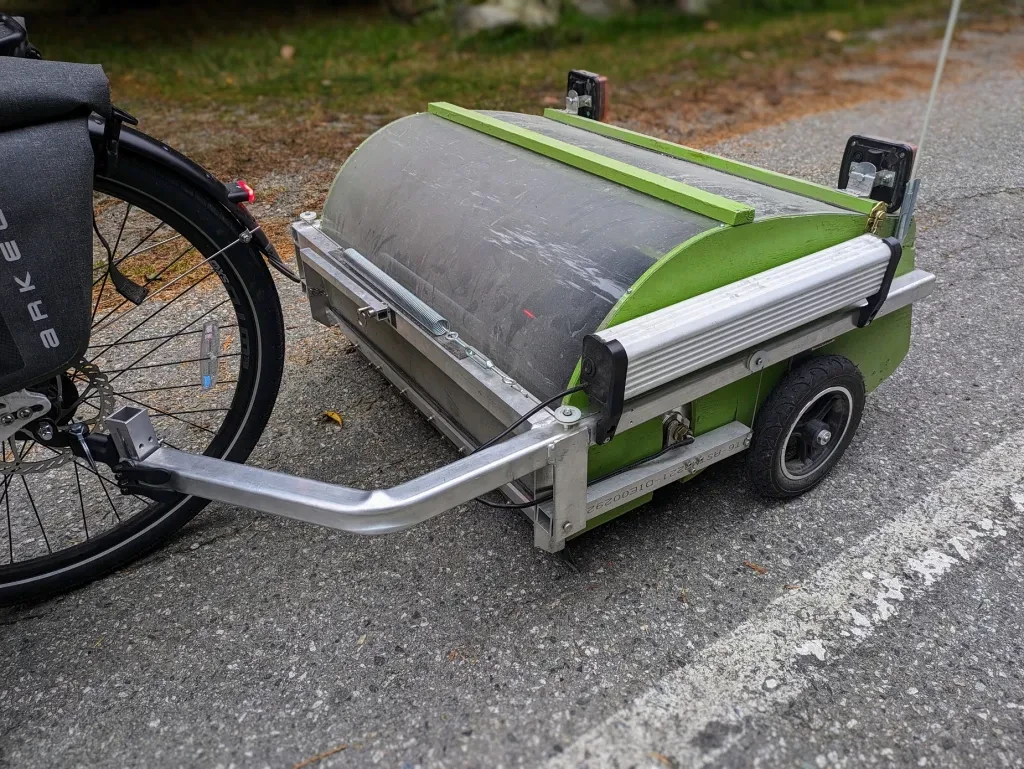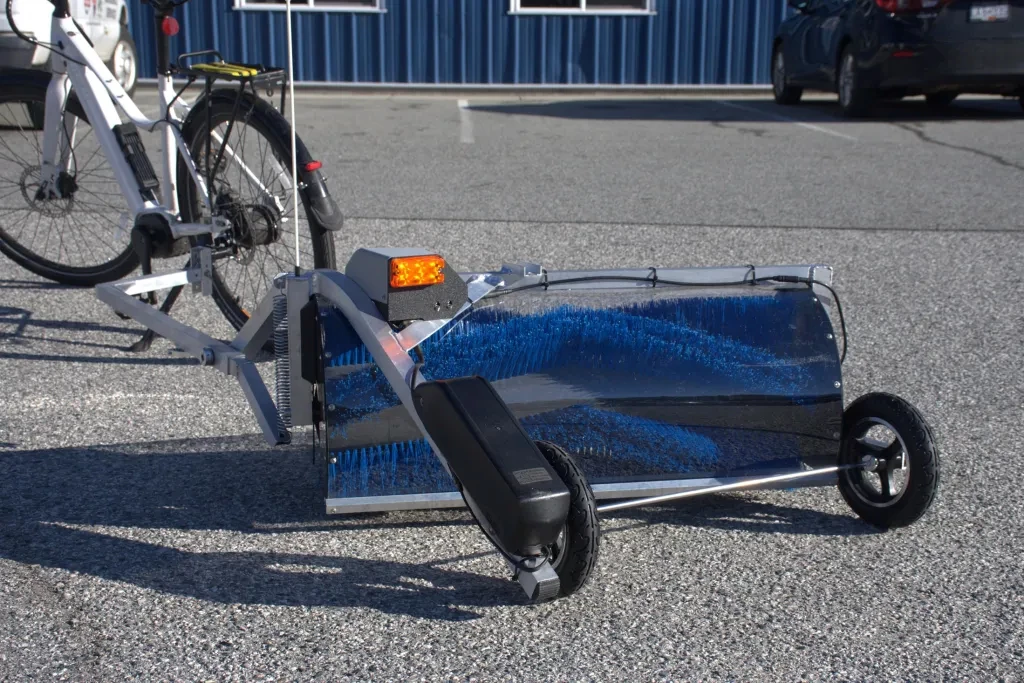A bicycle-towed electric street sweeper may soon be clearing gravel, broken glass, bits of metal and other debris off a bike lane near you. Known as the Bike Lane Sweeper, the device is already being trialled at multiple locations in Canada and the US.
The initial version of the sweeper was created by Pierre Lermant, a data science professional and mechanical engineer living in Sunnyvale, California.
"Although we are lucky in the Bay Area, and many streets/roads have bike lanes, they tend to accumulate debris pushed to the side by the main car/truck traffic, making them unpleasant to ride and puncture-prone," he tells us.
"I thought to myself one day during Covid, 'Wouldn't it be nice if we could come up with a sweeper attached to a bicycle to clear the bike lanes,' and the project was born, about three years ago."
Lermant's first prototypes were "very rudimentary," consisting mainly of wooden 2 x 4's and a chain-drive electric motor connected to an industrial sweeping brush. About a year and a half ago, though, he was contacted by Canadian mechanical engineer Cedric Eveleigh, who previously brought us the revolutionary Supre Drive mountain bike drivetrain.

Eveleigh had recently moved to the Sunshine Coast region of British Columbia (just north of Vancouver), and started volunteering with a group that regularly got together and manually swept the local bike lines with brooms. They did so as a means of drawing attention to the fact that more frequent government lane-clearing was required.
"It was at these events that I started thinking about the idea of a bike lane sweeper, with a powered brush, pulled by bike," says Cedric. "I then Googled the idea and discovered Pierre, who had built proof-of-concept bike lane sweepers. I contacted him to offer help with engineering and manufacturing, and Pierre was keen to work together."
After collaborating both via the internet and in person, Eveleigh and Lermant have now developed two market-ready versions of the Bike Lane Sweeper. One of them, intended mainly for use in rural areas, simply sweeps debris off to one side, towards the ditch. The other, aimed more at urban use, collects debris in a bin that can be periodically removed and emptied.

Both models feature an aluminum frame, plywood or ABS side panels, and an ebike-battery-powered scooter motor that spins up the brush. That motor is wirelessly activated by a handlebar-mounted remote.
The sweepers also sport a standard Burley trailer hitch that should be compatible with just about any type of bike. Additionally, because the sweepers are only about one meter wide (3.3 ft), they can be lifted by two people and transported in the back of a car if necessary.
Prototypes are currently being tested not only by the group Cedric belongs to (Transportation Choices Sunshine Coast, or TraC), but also by cycling advocacy groups in Portland, Oregon; Charlotte, North Carolina; and Sonoma County in California.

"There are several possible business models that we're exploring, including selling bike lane sweepers to non-profit volunteer-based groups (there have been three successful crowdfunding campaigns), selling them to municipalities, and offering sweeping as a service," Eveleigh tells us.
Parties interested in any of those of those options, or who just wish to help out, can contact Eveleigh and Lermant via the Bike Lane Sweeper website – final pricing has yet to be determined. And if you simply like the idea and want to offer financial support, you can pay a visit to Cedric's gofundme campaign.
"Debris often forces cyclists into car traffic, causes flat tires, or is simply unpleasant," he says. "This bike lane sweeper project was born out of a desire to remove debris from bike lanes to make cycling safe and enjoyable, getting more folks to ride bikes."
Both versions of the Bike Lane Sweeper can be seen in action, in the video below.
Project page: Bike Lane Sweeper







